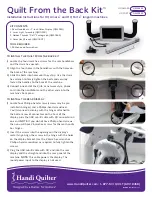
Battery System User Manual for Panasonic LJ-SK84A
Grid Tied PV System
–
User Manual
Version 2.0 © solarcity 2016 UM-1056-PV-2.0
5
6.1 Battery enclosure
The battery enclosure houses the batteries and the inverter. The Panasonic storage
battery system is a stand-alone system and comes with an integrated inverter. The
inverter converts the direct current (DC) electricity stored in the batteries into 230V
alternating current (AC) electricity for use in your home.
Beside the inverter the enclosure contains, depending on the model, 2 or 3 Lithium-Ion
battery cells with a maximum usable capacity of 2.8kWh each.
The battery system usually operates in the
‘
maximum self-consumption mode
’
. This will
ensure that you get the most out of the solar and battery system. It will only charge when
there is surplus solar energy generated on your roof, and will discharge whenever your
home energy demand is higher than what the solar system can deliver. This reduces the
amount of electricity that is exported to the grid and increases the clean energy directly
used in your home.
6.2 Network adapter
The Network Adapter connects the battery system to the monitoring server. This server is managed by solarcity and operated by
Panasonic NZ. The connection to the server enables you and solarcity to monitor the battery performance and allows early
detection of possible faults. It also allows the battery to be run in
‘
server adaptive mode
’
which is explained in section 6.4.
6.3 Monitoring
The battery system can be monitored through a smartphone application that is available for Android and iOS devices. You
can download the Panasonic monitor application from the Apple app store or the Google Play store.
For iOS the application can be found here:
https://itunes.apple.com/nz/app/panasonic-home-storage-battery/id1121486441?mt=8
For Android the application can be found here:
https://play.google.com/store/apps/details?id=com.panasonic.nz.enerygyapp
To obtain your login details please contact solarcity.
6.4 Server adaptive mode
In some instances, it can make sense to charge the battery over night at a lower electricity rate. This can be the case
during winter, when your household electricity use increases or your solar generation decreases meaning there is not
enough surplus solar electricity generation to fully charge the battery during the day. If your retailer offers a
‘
day-night
’
tariff, you might gain some financial benefit from using this function during winter.
If requested by the customer, solarcity has the option to run the battery in
‘
server adaptive mode
’
which will take
advantage of their specific low overnight prices. In this mode of operation, the battery can receive commands from the
utility server. The server uses a smart algorithm to charge the batteries when your power prices are the cheapest and
discharge the batteries when your power is most expensive.
This will not affect the batter
y’s
ability to store surplus solar energy. The system will work to maximise self-consumption
and only charge overnight if required, and if it makes financial sense to do so.
6.5 The battery control and display panel
The Panasonic battery is a stand-alone system and will be fully set up and programmed at the time of installation. There
are, however, a number of functions that you can access, such as the emergency back-up mode, which is explained in
































